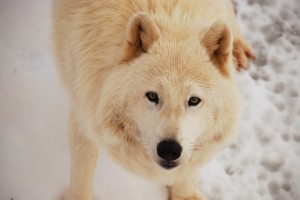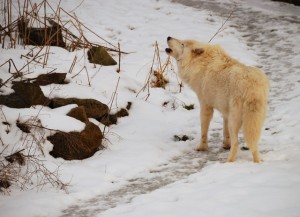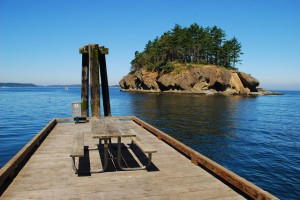The Benefits of Nature and Photography
by Curt Remington
Spending time in nature, keenly aware of your environment, can give you a whole new perspective on life. You might get caught up in a stunningly beautiful scene or the details of a flower or bug. If you go out in pursuit of nature photography, you’re likely to pay more attention to the details. As a bonus, you can capture an image to experience and share again and again.
I had a new perspective, after a day at the Vancouver, BC Zoo, which is spread out and more like a wild animal park. I visited on midweek, in the middle of winter and saw only a handful of other visitors. At the Arctic Wolf display, the dominant wolf walked laps around the enclosure. Once he noticed me, he walked over and looked up, holding my gaze. I felt an incredible connection, as we psychically communicated. He posed for a few pictures, then trotted 50 feet away and began howling. Soon, the other Arctic Wolves joined in. Shortly after that, another group of wolves (Vancouver Island Wolves) joined in the chorus from a quarter mile away. They all continued with their song, as if they were sharing their love and longing for the outdoors, especially the wild places. Not only did I have an incredibly memorable moment, but I got some great pictures, one of which is on the back of my business card.
Spending time seeking photos in nature is a wonderful form of mindfulness or meditation, which basically means to reach a calm state as you find something in the present to gently focus on, letting all those other thoughts go. This can help you relax, think more clearly, let go of stress, improve your health, have fun and create artistic photos. With all those benefits, you’d think everyone would be outdoors with their camera.
Of course, you can get a lot of these benefits by just going out and tuning into the details of nature. But, if you do so with a camera in hand, it may be a more focused experience, and you can come home with beautiful images.
With a camera you may work harder to find beautiful places and go when the lighting is best. Early or late in the day tends to have warm, soft light and saturated colors. Mid-day light can be harsh with washed out colors and difficult highlights and shadows. It also makes people squint. The soft diffused light of a partly cloudy day works well for people, flowers, wildlife and many other subject’s. If you find a good subject, consider returning when the lighting is ideal. Sitting and waiting patiently for the changing light of a sunset can pay off in the meditative state you reach and in the images you capture.
Composition can dramatically affect a picture’s impact. Simple is usually better, so try zooming or changing angles to eliminate clutter. Be sure to scan the viewfinder for unwanted items and to check that the horizon is level, especially with pictures of water. Some pictures look best in a vertical format, so try turning the camera sideways.
Balance is an important element of composition, one which I look for in nature when taking pictures. In the photo of the dock and island, the two subjects balance each other. That photo is also an example of the rule-of-thirds. By placing your subject(s) a third of the way over from center, and a third of the way up, you have a more dynamic picture. When you offset your subject, your eye tends to travel around the picture.
To add depth to a picture, you can include foreground details. A path, road or creek that lead your eye into a picture also give a sense of depth. This is especially effective if you find one with s-bends.
The absolutely best pictures capture a feeling or tell a story, so watch for such opportunities. Pictures of people or animals work well for this.
There are great subjects for pictures all around us. If we pay close attention to our environment, we can find beautiful pictures that we might have walked right by. You might get creative and try a close-up of pebbles or insects, maybe try night photography, clouds or fascinating patterns. And of course, there’s landscapes, seascapes, wildlife and flowers.
As to gear, there are a lot of good cameras out there, depending on your needs. If you’re not making big enlargements, a point and shoot digital might be best. They’re very compact and lightweight. I carry heavier Nikon digital single lens reflex gear, like the Nikon d5100, with an 18-200 lens. Kenrockwell.com has excellent reviews on a variety of cameras and lenses. Digital editing software, like Photoshop, can vastly improve photos. You can adjust contrast or color, darken a sky, sharpen a photo or remove imperfections. There is reasonably good software on the internet for free.
The best piece of advice is carry a camera often. The more pictures you shoot, the more instinctive it becomes. This makes it easier to let go of your thoughts and really get into the moment. Using some simple techniques, you may come home with some spectacular photos. Please be sure to visit my photo gallery for picture ideas.







